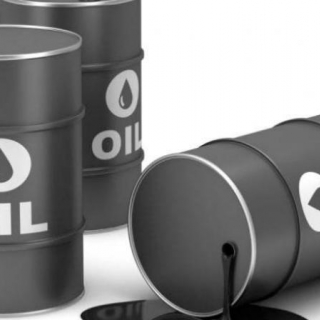


Oil prices rebounded after last week's decline after OPEC+ agreed to raise production at a modest rate, amid doubts about how many members could continue to increase output.
The rise marked a reversal of production cuts that were previously set to last until the end of 2026—following the return of most of the oil production that had been halted for several months—as the alliance seeks to regain market share. This signals the alliance's confidence in further pushing its bold oil market strategy.
Brent rose above $66 per barrel after falling nearly 4% last week, when it became clear that a production increase was imminent. Prices also pushed higher after Bloomberg News reported that the European Union was exploring new sanctions on Russian banks and energy companies as part of its latest steps to end the war in Ukraine, a move expected to be coordinated with the US.
The Organization of the Petroleum Exporting Countries and its partners will add 137,000 barrels per day in October, less than the increases scheduled for the previous two months. Actual volumes are also likely to be lower than announced, as some group members face pressure not to take part in their increases to compensate for previous increases, while others lack spare capacity.
Earlier last month, the International Energy Agency forecast a record surplus next year, which Goldman Sachs Group Inc. predicted would push Brent to the low $50s. The global benchmark has fallen more than 10% this year, with President Donald Trump's trade tariffs also weighing on the energy demand outlook.
OPEC+ said on Sunday that restarting the remaining 1.66 million barrels per day of production cuts would depend on "evolving market conditions," and that the production increases could be reversed. The group's faster-than-expected return to production that had been halted over the past few months surprised some in the oil market, but prices have remained relatively stable after an initial decline in April.
"Saudi Arabia is back in control, they're the only one with spare production capacity," said Jeff Currie, head of energy pipeline strategy at Carlyle, in a Bloomberg TV interview. "There's a very fine line between excess oil supply and running out of spare production capacity."
Monday's oil price gains also drew support from the broader market, with global stock markets reversing Friday's decline amid concerns that the Federal Reserve is lagging behind in supporting a cooling labor market. The dollar also weakened, making commodities priced in that currency more attractive.
Saudi Crown Prince Mohammed bin Salman will visit Washington in November to meet with Trump, indicating possible political considerations behind the supply decision. The US president has repeatedly called for lower fuel prices as he seeks to control inflation.
China's buildup of crude oil stocks by about 200,000 barrels per day in recent months has helped support demand, Frederic Lasserre, global head of research and analysis at Gunvor Group, said at the Asia Pacific Petroleum Conference in Singapore on Monday. However, China may not be able to absorb the entire upcoming market surplus, he added. (alg)
Source: Bloomberg
Oil prices fell on Friday (October 24th) as skepticism crept into the market regarding the Trump administration's commitment to sanctions against Russia's two largest oil companies related to the war ...
Oil steadies but supply fear keeps it on track for weekly gain Oil prices were little changed on Friday, stabilising after the previous day's surge and remaining on track for a weekly gain as fresh U...
Oil prices are headed for their biggest weekly gain since June after the US imposed sanctions on major Russian producers Rosneft and Lukoil, potentially disrupting supply and shifting demand to altern...
Oil prices surged about 5% to a two-week high on Thursday (October 23rd) after the US imposed sanctions on major Russian suppliers Rosneft (ROSN.MM) and Lukoil (LKOH.MM) over Moscow's war in Ukraine, ...
Oil prices surged after the US announced sanctions on Russia's largest oil companies, threatening supplies from one of the world's largest oil producers. West Texas Intermediate crude jumped 6.2% to ...
Three major US indexes closed at new record highs after a lower-than-expected inflation report raised the possibility of a Federal Reserve interest rate cut later this year and prompted investors to shift to riskier assets. The S&P 500 rose...
Oil prices fell on Friday (October 24th) as skepticism crept into the market regarding the Trump administration's commitment to sanctions against Russia's two largest oil companies related to the war in Ukraine. Brent crude futures closed 5 cents,...
Gold prices pared losses on Friday (October 24) after slightly lower-than-expected US inflation data reinforced expectations that the Federal Reserve will cut interest rates next week, but the precious metal is still expected to post its first...
 Asia-Pacific markets fell Thursday, tracking Wall Street's declines on concerns about U.S.-China trade relations.
Trade fears resurfaced after...
Asia-Pacific markets fell Thursday, tracking Wall Street's declines on concerns about U.S.-China trade relations.
Trade fears resurfaced after...
 Following the final October meeting (October 28–29, 2025), the FOMC calendar still lists December 9–10, 2025. This means the Fed could technically...
Following the final October meeting (October 28–29, 2025), the FOMC calendar still lists December 9–10, 2025. This means the Fed could technically...
 Asia-Pacific markets rose Friday, after the White House said that U.S. President Donald Trump and China's President Xi Jinping were set to hold...
Asia-Pacific markets rose Friday, after the White House said that U.S. President Donald Trump and China's President Xi Jinping were set to hold...
 The Trump administration announced on Wednesday new sanctions targeting Russia's two largest oil companies, Rosneft and Lukoil, as part of efforts...
The Trump administration announced on Wednesday new sanctions targeting Russia's two largest oil companies, Rosneft and Lukoil, as part of efforts...